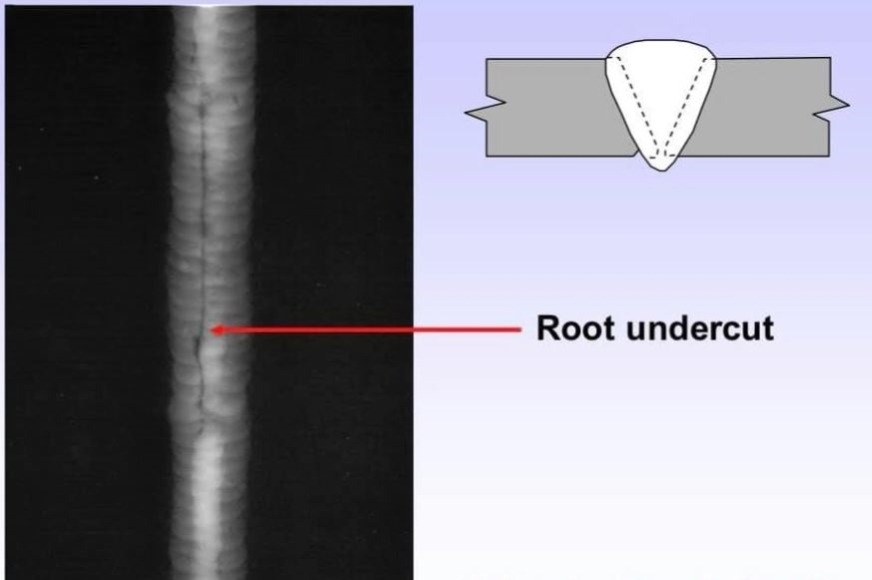Ultimate Guide to Preventing Weld Undercut: Tips and Techniques
Ultimate Guide to Preventing Weld Undercut: Tips and Techniques
Blog Article
Comprehending the Causes and Solutions for Undercut Welding in Metal Construction Procedures
In the realm of metal fabrication procedures, the event of undercut welding postures a significant challenge that demands a detailed understanding of its causes and sensible options. The elaborate interplay of numerous elements throughout welding operations can cause this unwanted phenomenon, affecting the architectural stability and general quality of the welded joints - Preventing weld undercut. By studying the origin of undercut welding and exploring effective therapeutic actions, producers can boost the requirement of their workmanship and guarantee the production of flawless steel components
Typical Reasons For Undercut Welding
Often forgotten in metal construction, undercut welding occurs as a result of different factors that demand precise attention and competence to be successfully alleviated. One typical reason of undercut welding is extreme warmth input. When the warm input is too expensive, it can result in the melting and succeeding disintegration of the base material along the edges of the weld joint, creating a groove or undercut. In addition, improper welding techniques, such as making use of the incorrect welding angle or take a trip rate, can likewise add to damage development. Inadequate securing gas protection is one more vital factor that can lead to damaging. Inadequate gas protection stops working to shield the weld swimming pool properly, bring about oxidation and undercut problems. Additionally, the selection of welding specifications, such as voltage, existing, and cable feed rate, plays a considerable function in the incident of undercut welding. Comprehending these common causes is crucial for carrying out precautionary measures and guaranteeing top notch welds in steel manufacture processes.
Impact of Incorrect Welding Parameters
Imprecise welding criteria can significantly compromise the stability and high quality of bonded joints in steel manufacture procedures. The effect of inaccurate welding specifications materializes in different ways, leading to structural weak points and issues in the welded elements. Thorough attention to welding parameters is paramount to ensure the production of top quality welds with the preferred mechanical buildings and structural integrity.
Impact of Improper Lantern Angle
Inappropriate lantern angle in welding operations can significantly affect the high quality and integrity of the final weld joints in steel fabrication procedures. The lantern angle plays a critical duty in determining the warm input and circulation during welding. When the lantern angle is incorrect, problems such as undercutting can occur. Undercutting is an usual welding issue where a groove creates along the weld toe, damaging the joint and jeopardizing its structural stability.
A torch angle that is also high can lead to insufficient penetration, insufficient blend, and enhanced spatter. On the various other hand, a lantern angle that is as well shallow can lead to too much penetration, burn-through, and distortion of the base product. Preventing see post weld undercut. Appropriate lantern angle is essential for guaranteeing regular weld quality, toughness, and look
To avoid undercutting and other issues caused by incorrect lantern angles, welders should be educated to maintain the proper torch angle throughout the welding process. Normal tracking and adjustment of lantern angles throughout welding can assist accomplish sound welds with very little defects.
Role of Inadequate Welding Strategies

One more facet of inadequate welding methods is improper weld prep work. Inadequate cleansing of the base steels, wrong joint style, or insufficient side prep work can all contribute to damage welding. Moreover, poor shielding gas protection or utilizing the wrong kind of gas can lead to insufficient blend and the formation of undercut defects.
To deal with the duty of inadequate welding strategies in steel fabrication procedures, it is necessary to offer extensive training for welders. Proper education and learning on welding specifications, joint prep work, and shielding gas choice can aid stop undercut welding and guarantee high-quality welds in steel construction tasks.
Efficient Solutions for Undercut Welding
Resolving undercut welding in steel fabrication calls for redirected here carrying out effective solutions to boost weld top quality and architectural stability. Among the primary options to fight undercut is to change welding criteria such as voltage, current, and take a trip rate to guarantee appropriate heat input and blend. By fine-tuning these setups, welders can protect against extreme melting of the base steel and filler product, lowering the possibility of undercut development.
In addition, proper joint preparation is crucial in preventing undercut. Guaranteeing tidy base metal surface areas without contaminants and using the suitable bevel angle can help promote far better weld infiltration and lower the threat of undercut - Preventing weld undercut. Utilizing suitable welding methods, such as weaving or oscillating the lantern, can also aid in distributing heat uniformly and filling up the weld joint sufficiently, decreasing the possibility of undercut defects
In addition, choosing the proper welding consumables, consisting of electrodes and filler metals, is crucial in minimizing undercut. Using materials with suitable chemical compositions and mechanical homes can add to achieving sound welds with minimal undercut. Regular evaluation and high quality control measures ought to additionally be applied to discover and address undercut issues promptly, guaranteeing official source the total integrity of produced steel elements.

Verdict
In verdict, understanding the causes and remedies for undercut welding in steel fabrication procedures is crucial for attaining premium welds. By resolving common causes such as wrong welding specifications, improper lantern angle, and poor welding techniques, welders can protect against damaging and make certain solid, resilient welds. It is vital to take note of these variables and execute efficient remedies to enhance the general welding process and end product top quality.

Report this page